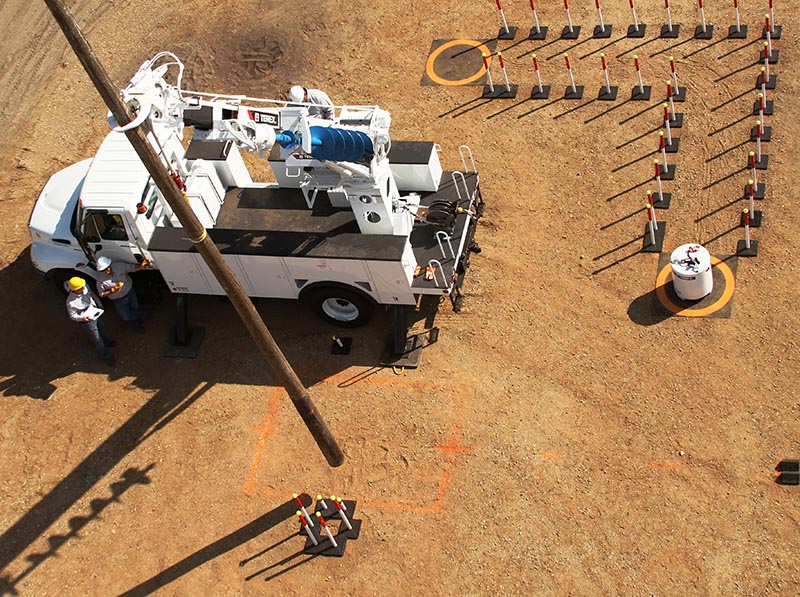July 2021—Digger derricks are versatile machines that are capable of many operations, including digging a hole with an auger and lifting and setting a pole in the hole. Because one of the primary activities is lifting and moving loads, a digger derrick may be performing as a crane in construction activities and needs to follow OSHA regulations.

In some cases, digger derricks may be performing as a crane in construction activities and therefore need to follow OSHA regulations, including operator certification.
In accordance with the final OSHA 29 CFR 1926 Subpart CC crane standard—Cranes and Derricks in Construction—that took effect on November 10, 2018, if using a digger derrick for crane work, operators must be certified by an accredited third-party certifying organization such as NCCCO. Employers also must evaluate and document operator qualification to safely operate the equipment and perform the assigned work.
Subpart CC requires cranes and derricks performing construction activities to use certified operators, except for small service cranes and when performing work under the exemptions of:
- 29 CFR 1926.269 Subpart V, Electric Power Generation, Transmission and Distribution
- 29 CFR 1910.268 Telecommunication
Therefore, to be compliant, employers need to understand the limits of the exemptions and effectively train and evaluate their operators. The underlined portions of the standard state the exemptions are only if they are in compliance with 1910.269 Subpart V in its entirety for the work being performed:
1926.1400(c)(4)—Digger derricks when used for auguring holes for poles carrying electric or telecommunication lines, placing and removing the poles, and for handling associated materials for installation on, or removal from, the poles, or when used for any other work subject to subpart V of this part. To be eligible for this exclusion, digger-derrick use in work subject to subpart V of this part must comply with all of the provisions of that subpart, and digger-derrick use in construction work for telecommunication service (as defined at Sec. 1910.268(s)(40)) must comply with all of the provisions of Sec. 1910.268.
The exemptions do not apply to companies as a whole or if their primary business is power transmission or communications. They apply only the work being performed. If it is a “construction activity” as defined by OSHA, the operator needs to be certified. There are several types of work that are not exempt; some are:
- Streetlights
- Signal lights
- Water and gas work
- Building any type of buildings
- Sign installation or construction
- Setting steel or foundations in substations
- Lifting or placing trench boxes or shoring during excavation activities
A general way for electric utilities to think about the requirement for certification is: Any activities where the item lifted consumes electric power or does not directly transmit electric power may not be exempt. OSHA states in the Federal Registry of November 9, 2012, that the foundation and support structures of substations are construction and not exempt; however, placing electrical components is exempt.
Once the digger derrick operator participates in any construction activities outside of the stated exemptions for the telecommunications/power transmission industry, then his or her requirement is to be nationally certified, in line with all other mobile crane operators conducting construction-related activities. Violating Subpart CC rules while operating a digger derrick voids the exemption for that employer, and violations may also be assessed under the cranes and derricks standard.
States’ rules must be at least compliant with the federal OSHA regulations, and several states have their own OSHA plans with more restrictive requirements, so they may not allow the exemptions allowed in the federal OSHA standard. As with all OSHA regulations, the OSHA inspector makes the final determination if exempt or not exempt.